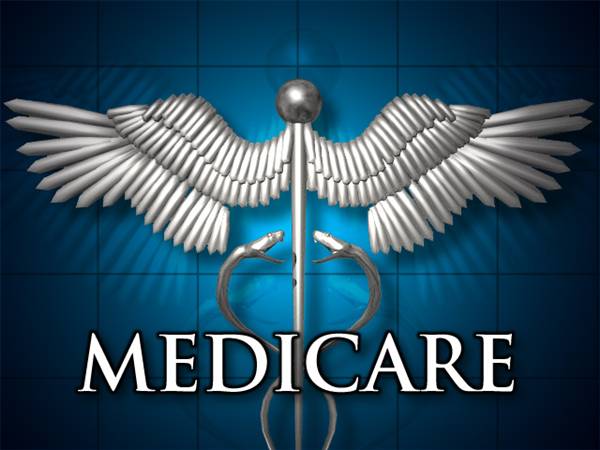Obesity and the Rising Cost of Healthcare in America
Author: Katerina B. Tang
Obese people account for 37 percent of the United States’ population, but obesity-related diseases and health problems account for 61 percent of healthcare costs in the United States every year (“The Economics of Overweight and Obesity,” 2007). The costs exceed $147 billion per year, which is putting a huge strain on the economy and the healthcare system.
If obesity rates keep growing, costs associated with obesity will become too large for federal healthcare systems to cover. A reduction in obesity rates across the country would save the government tens of billions of dollars that could be spent on other government programs.
 In 1990, no state in the U.S.A. had an obesity rate over 14 percent. In 2000, 23 states had an obesity rate between 20 and 24 percent, and the other 27 states had a lower obesity rate. In 2010, 36 states had an obesity rate of at least 25 percent, and 12 states had an obesity rate of 30 percent or higher (Pomerance). This dramatic rise in obesity has caused many problems for the economy and healthcare system.
In 1990, no state in the U.S.A. had an obesity rate over 14 percent. In 2000, 23 states had an obesity rate between 20 and 24 percent, and the other 27 states had a lower obesity rate. In 2010, 36 states had an obesity rate of at least 25 percent, and 12 states had an obesity rate of 30 percent or higher (Pomerance). This dramatic rise in obesity has caused many problems for the economy and healthcare system.
Obesity is defined as being grossly overweight, usually defined as having a body mass index (BMI) greater than 30. Neither Medicare nor Medicaid directly covers the condition of obesity, but the health problems related to or caused by obesity are covered. Obesity can lead to Type 2 diabetes, chronic heart disease, hypertension, and many other syndromes and diseases that are covered by Medicaid and Medicare. As obesity has increased, so has the incidence of these diseases, thereby increasing the cost of healthcare.
One of the biggest problems with rise in obesity is the corresponding rise in healthcare costs. Though healthcare costs would have grown naturally over the years, obesity has made a big contribution to the tremendous increase in costs. In 1990, the federal government spent about $107.9 billion on Medicare (about 8.8 percent of total expenditures) and $43.3 billion on Medicaid (about 3.5 percent of expenditures). By 2000, those numbers doubled. In 2010, $517.5 billion were spent on Medicare (18.9 percent of expenditures) and $265.4 billion on Medicaid (9.7 percent of expenditures) (Su). By 2010, the federal government was spending almost $800 billion on Medicare and Medicaid (28.6 percent of expenditures).
If obesity rates keep rising, medical costs  associated with obesity will cause payroll taxes (paid by most employees, employers, and the self-employed) and income taxes paid on Social Security benefits to rise (these taxes are used to fund Medicare). Medical costs for treating obesity-related diseases are expected to rise $48 billion to $66 billion per year if the obesity rate continues to rise at the current pace. At current rate of increase, the obesity rate in America in 2030 would be about 50 percent, which could cause over 6 million cases of diabetes, 5 million cases of coronary heart disease, and half a million cases of cancer by 2030 (Levi). If obesity rates do not go down, medical costs will become too large for government programs to cover. Increasing healthcare costs aren’t the only problems the obesity rate is causing.
associated with obesity will cause payroll taxes (paid by most employees, employers, and the self-employed) and income taxes paid on Social Security benefits to rise (these taxes are used to fund Medicare). Medical costs for treating obesity-related diseases are expected to rise $48 billion to $66 billion per year if the obesity rate continues to rise at the current pace. At current rate of increase, the obesity rate in America in 2030 would be about 50 percent, which could cause over 6 million cases of diabetes, 5 million cases of coronary heart disease, and half a million cases of cancer by 2030 (Levi). If obesity rates do not go down, medical costs will become too large for government programs to cover. Increasing healthcare costs aren’t the only problems the obesity rate is causing.
Obesity also affects the economy in multiple ways. Due to absenteeism (overweight/obese people take time off for medical attention more than their non-overweight counterparts), obese workers suffer a reduction in productivity and cause economic loss and increased healthcare costs to their company. In 2009, the cumulative cost of obesity on the average company with 1,000 employees totaled a staggering $285,000 dollars (“The Economics of Overweight and Obesity,” 2010). Studies show that medical care to treat obesity-related diseases, lower productivity, and absenteeism cost U.S. companies $45 billion per year (Get America Fit Foundation).
Even though most effects of obesity are negative, there is a slight upside to the situation. Every year, new products, such as extended seat belts, heavy-duty office chairs, and super-sized towels and robes designed specifically for obese people are created. New programs for weight loss, such as commercial weight-loss centers and Web-based diet and nutrition services have also been popular. New audio and video programs, low-calorie and low-carbohydrate food products, diet books, and prescription diet drugs are also on the market. About 45 million Americans diet every year, and about 30 billion dollars are spent annually to lose weight or prevent weight gain (“The Economics of Overweight and Obesity,” 2010). Arguments can be made that since new products are being produced and bought, obesity is not such a terrible thing, but positive effects on the economy are completely overshadowed by negative effects.
 A recent study shows that for an investment of ten dollars per person in a proven community-based program that increases physical activity or nutrition awareness will save over $16 billion annually. This is a return of about six dollars per two dollars invested. Under this formula, Medicare would save $5 billion, Medicaid – about two billion, and private payers – about nine billion.
A recent study shows that for an investment of ten dollars per person in a proven community-based program that increases physical activity or nutrition awareness will save over $16 billion annually. This is a return of about six dollars per two dollars invested. Under this formula, Medicare would save $5 billion, Medicaid – about two billion, and private payers – about nine billion.
In conclusion, the number one thing the government should do to help the healthcare system is to bring down obesity rates. Money should be spent on programs that encourage a healthy lifestyle and educate people on being healthy. If obesity rates were reduced by only five percent, the government could save an estimated $611.7 billion on healthcare costs over the next twenty years (Levi). Saving money on the healthcare system as a result of obesity rate reduction would help our economy and benefit the entire country for generations to come.
Resources
Allison, David B., Rafaella Zannolli, and Venkat Narayan. "The Direct Health Care Costs of Obesity in the United States." American Health Association. American Health Association, Aug. 1999. Web. 15 Jan. 2013. <http://ajph.aphapublications.org/doi/pdf/10.2105/AJPH.89.8.1194>.
Andreyeva, Tatiana, Roland Sturm, and Jeanne S. Ringel. "Moderate and Severe Obesity Have Large Differences in Health Care Costs." Wiley Online Library. N.p., 6 Sept. 2012. Web. 15 Jan. 2013. <http://onlinelibrary.wiley.com/doi/10.1038/oby.2004.243/full>.
Centers for Disease Control and Prevention. "Adult Obesity Facts." Centers for Disease Control and Prevention. Centers for Disease Control and Prevention, 13 Aug. 2012. Web. 30 Jan. 2013. <http://www.cdc.gov/obesity/data/adult.html>.
"The Economics of Overweight and Obesity." Weight In America: Obesity, Eating Disorders, and Other Health Risks. Ed. Barbara Wexler. 2007 ed. Detroit: Gale, 2007. Information Plus Reference Series. Gale Opposing Viewpoints In Context. Web. 14 Jan. 2013.
"The Economics of Overweight and Obesity." Weight in America: Obesity, Eating Disorders, and Other Health Risks. Barbara Wexler. 2010 ed. Detroit: Gale, 2010. Information Plus Reference Series. Gale Opposing Viewpoints In Context. Web. 10 Jan. 2013.
Get America Fit Foundation. "Obesity Related Statistics in America." GAFF. N.p., n.d. Web. 30 Jan. 2013. <http://www.getamericafit.org/statistics-obesity-in-america.html>.
Kaiser Family Foundation. "Snapshots: Health Care Spending in the United States & Selected OECD Countries – Kaiser Family Foundation." Kaiser Family Foundation. Kaiser Family Foundation, 28 Apr. 2011. Web. 03 Feb. 2013. <http://www.kff.org/insurance/snapshot/oecd042111.cfm>.
Levi, Jeffrey, Laura M. Segal, and Rebecca Salay. "Bending the Obesity Cost Curve." Healthy Americans. Healthy Americans, Feb. 2012. Web. 15 Jan. 2013. <http://healthyamericans.org/assets/files/TFAH%202012ObesityBrief06.pdf>.
Medicare. "What Is Medicare?" Medicare.gov: The Official U.S. Government Site for Medicare. Medicare, n.d. Web. 03 Feb. 2013. <http://www.medicare.gov/sign-up-change-plans/decide-how-to-get-medicare/whats-medicare/what-is-medicare.html>.
Pomerance, Rachel. "Why We're So Fat: What's Behind the Latest Obesity Rates." US News. U.S.News & World Report, 16 Aug. 2012. Web. 30 Jan. 2013. <http://health.usnews.com/health-news/articles/2012/08/16/why-were-so-fat-whats-behind-the-latest-obesity-rates>.
ProCon. "US and Global Obesity Levels: The Fat Chart – Obesity – ProCon.org." US and Global Obesity Levels: The Fat Chart – Obesity – ProCon.org. ProCon, 5 Aug. 2011. Web. 03 Feb. 2013. <http://obesity.procon.org/view.resource.php?resourceID=004371>.
Quesenberry, Charles P., Bette Caan, and Alice Jacobson. "Obesity, Health Services Use, and Health Care Costs Among Members of a Health Maintenance Organization." JAMA Internal Medicine. JAMA Internal Medicine, 9 Mar. 1998. Web. 15 Jan. 2013. <http://archinte.jamanetwork.com/article.aspx?articleid=191520>.
Su, Betty W. "The U.S. Economy to 2010." U.S. Bureau of Labor Statistics. U.S. Bureau of Labor Statistics, Nov. 2001. Web. 24 Jan. 2013. <http://www.bls.gov/opub/mlr/2001/11/art1full.pdf>.
Katerina B. Tang is a middle school student in Ann Arbor, MI. This paper was written as part of her 8th grade Capstone Project.







